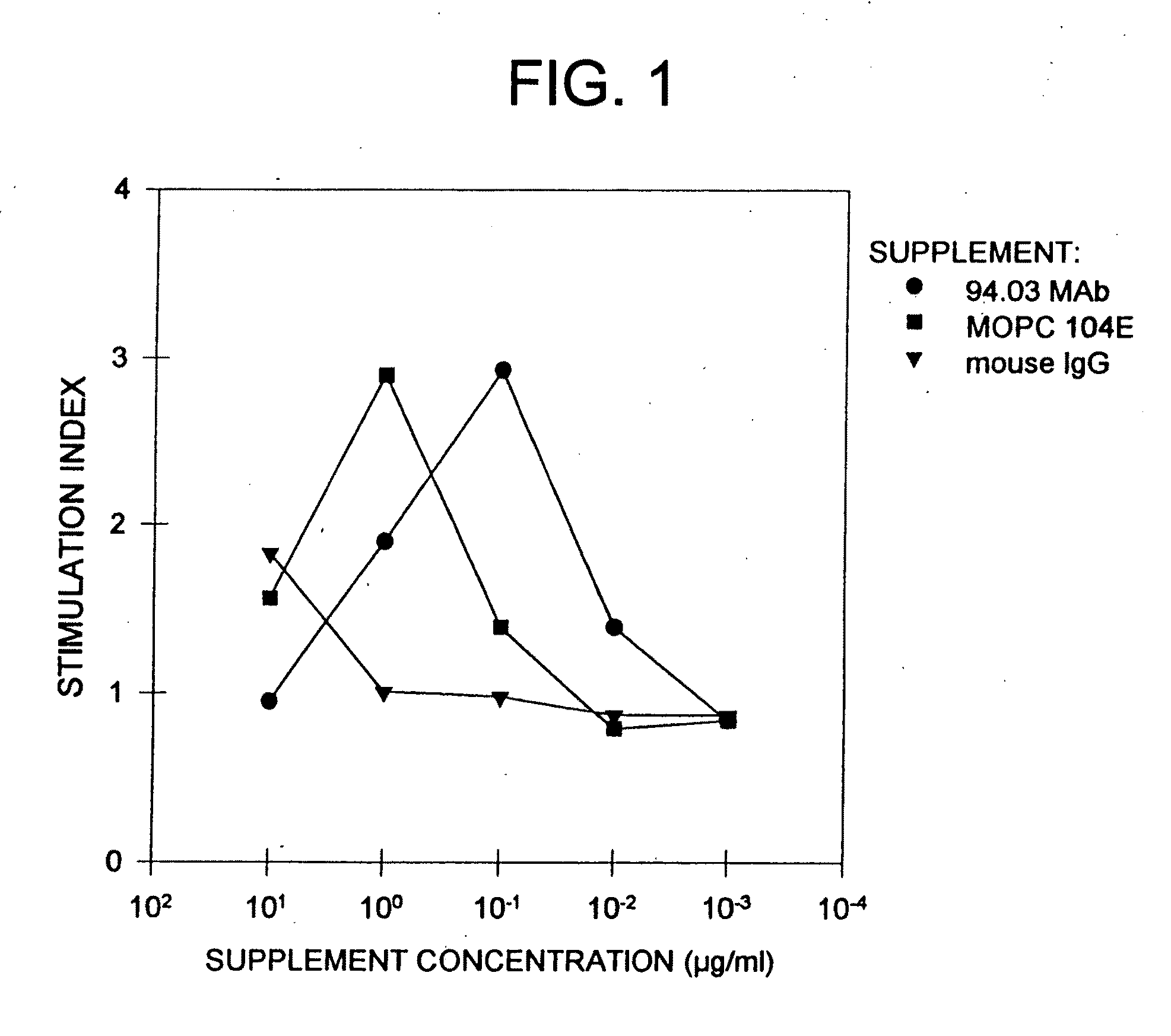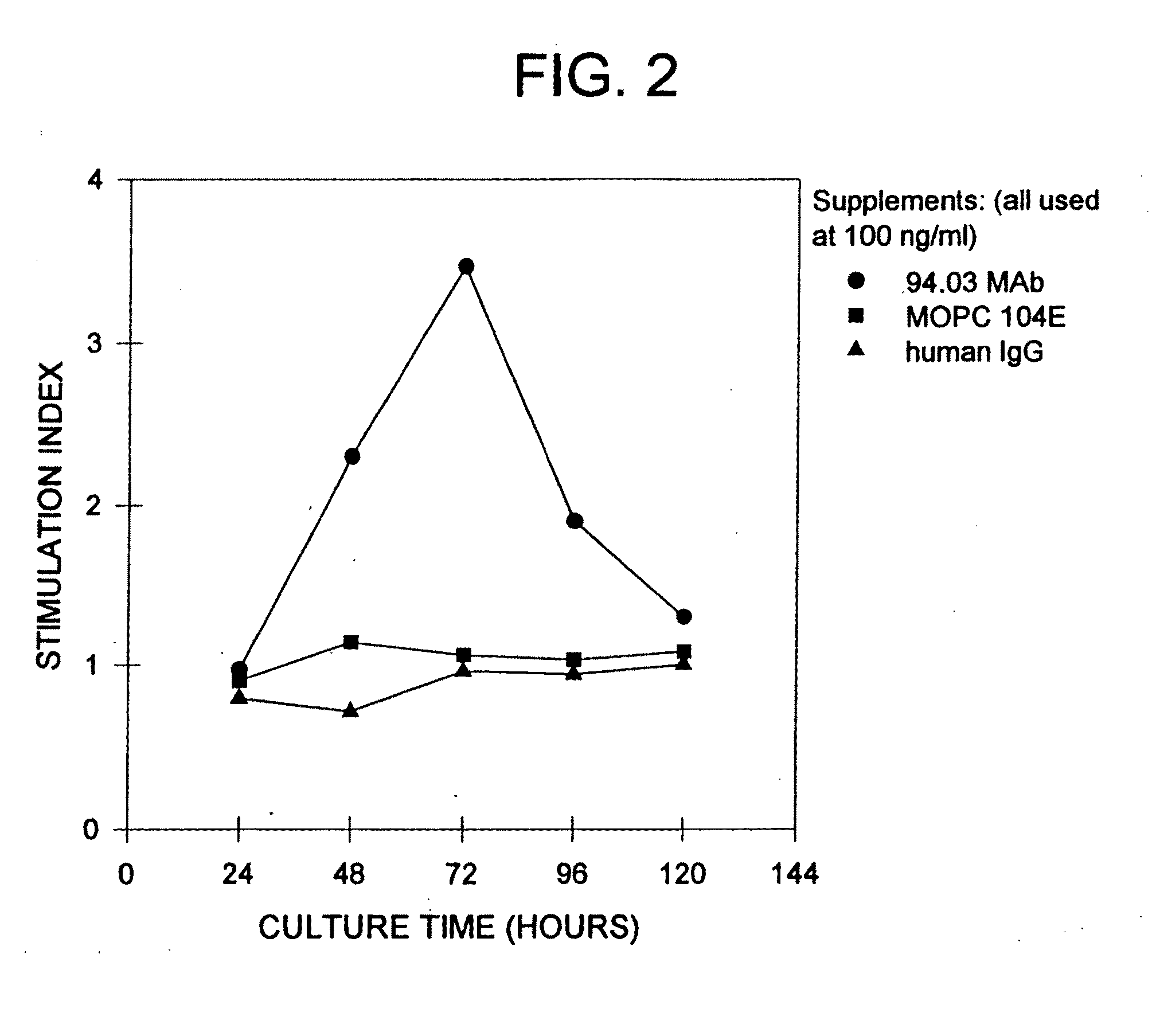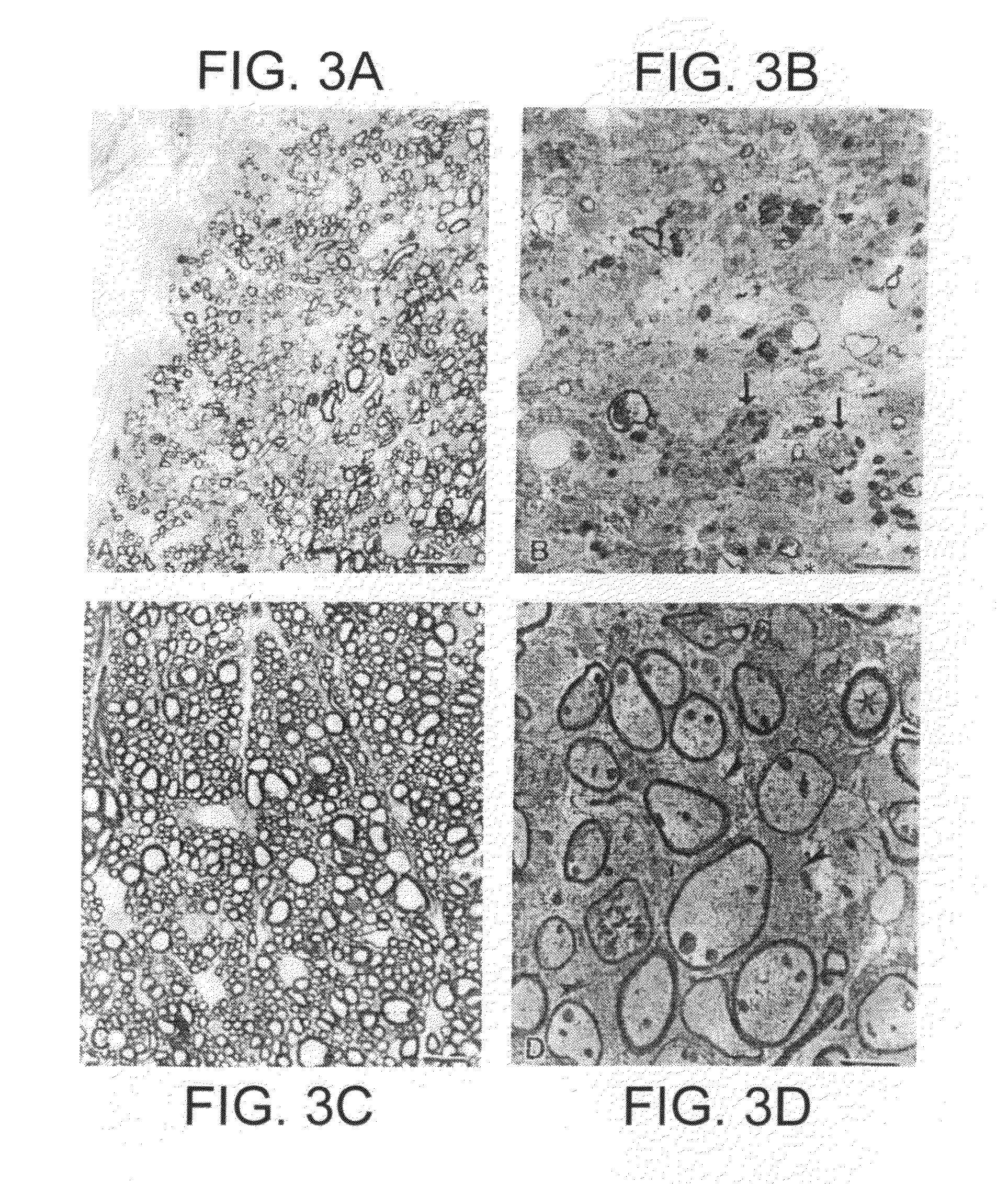Human IgM antibodies, and diagnostic and therapeutic uses thereof particularly in the central nervous system
a technology of human igm antibodies and igm antibodies, which is applied in the field of central nervous system, can solve the problems that specific autoantigens and pathogenic myelin-reactive t cells have not been definitively identified in the cns of ms patients, and achieve the effect of facilitating the reproduction of present antibodies and modulating the neurological activity of target mammalian
- Summary
- Abstract
- Description
- Claims
- Application Information
AI Technical Summary
Benefits of technology
Problems solved by technology
Method used
Image
Examples
example 1
Monoclonal Antibody Production, Screening and Purification
Animals
[0348]Spleens of two SJL / J mice (Jackson Laboratories, Bar Harbor, Me.) that had been injected twice with spinal cord homogenate (SCH) in incomplete Freund's adjuvant were used as the source of B cells for fusion and hybridoma production. Splenocytes were fused with NS-1 myeloma cells using polyethylene glycol, and viable cell fusions were selected with hypoxanthine-aminopterin-thymidine (HAT) media and cloned by limiting dilution as described (Katzmann, J. A. et al., Proc. Nat. Acad. Sci. USA, 78:162-166 (1981)).
ELISAs
[0349]Hybridoma supernatants from viable Ig-producing clones were screened for binding to SCH by an enzyme-linked immunosorbant assay (ELISA). The following antigens were used for screening mAbs: SCH—(10 μg) reconstituted in carbonate-bicarbonate buffer (pH 8.53). MBP—(1 μg) dissolved in PBS, GC (1 μg) dissolved in absolute alcohol, PLP (1 μg) dissolved in water. PLP was provided by Dr. W. Macklin (UCLS)...
example 2
In Vitro Testing of Monoclonal Antibodies
[0351]Selection of mAbs that Promote Glial Cell Proliferation
[0352]The ability of the mAbs to promote proliferation of glial cells in vitro was tested. Glial cells isolated from rat brain or optic nerves were seeded in Falcon Microtest II plates at a concentration of 2×104 cells per well in 0.1 ml of DME. Whole serum (SCH, IFA, MBP, GC, MBP / GC, PBS or PLP), purified Ig or mAb, was serially diluted and 0.1 ml aliquot was added to cells and assayed in triplicate. Three days later 3H-thymidine was added (1 μCi / ml) and cells were harvested after 17 hours with an automated cell harvester (Mash II Harvester). To document identity of cells proliferating (i.e., astrocytes, progenitor glial cells, macrophages), selected cultures after exposure to 3H-thymidine, were incubated with appropriate Ab specific for cell type followed by ABC immunoperoxidase technique. After reaction of Hanker-Yates reagent, the slides were immersed in Ilford K2 nuclear emulsi...
example 3
Promotion of CNS Remyelination Using a Monoclonal Antibody
[0357]The DA strain of TMEV was obtained from Drs. J. Lehrich and B. Arnason after eight passages in BHK cells. The virus was passaged an additional four times at a multiplicity of infection of 0.1 plaque forming units (PFU) per cell. Cell-associated virus was released by Freeze-thawing the cultures followed by sonication. The lysate was clarified by centrifugation and stored in aliquots at −70° C. All subsequent experiments will use passage 12 virus. This virus isolate causes white matter pathology without destruction of anterior horn cells.
In Vitro TMEV Neutralization Assay
[0358]Viral plaque assays were done as previously described (Patick, A. K., et al., J. Neuropath. Exp. Neurol., 50:523-537 (1991)). To assess neutralization, aliquots of TMEV (200 PFU / ml) were incubated with various concentrations of Ab for 1 hour t room temperature prior to plating onto confluent L2 cells. As a positive control, serum from susceptib...
PUM
| Property | Measurement | Unit |
|---|---|---|
| OD | aaaaa | aaaaa |
| pH | aaaaa | aaaaa |
| concentration | aaaaa | aaaaa |
Abstract
Description
Claims
Application Information
 Login to View More
Login to View More - R&D
- Intellectual Property
- Life Sciences
- Materials
- Tech Scout
- Unparalleled Data Quality
- Higher Quality Content
- 60% Fewer Hallucinations
Browse by: Latest US Patents, China's latest patents, Technical Efficacy Thesaurus, Application Domain, Technology Topic, Popular Technical Reports.
© 2025 PatSnap. All rights reserved.Legal|Privacy policy|Modern Slavery Act Transparency Statement|Sitemap|About US| Contact US: help@patsnap.com



